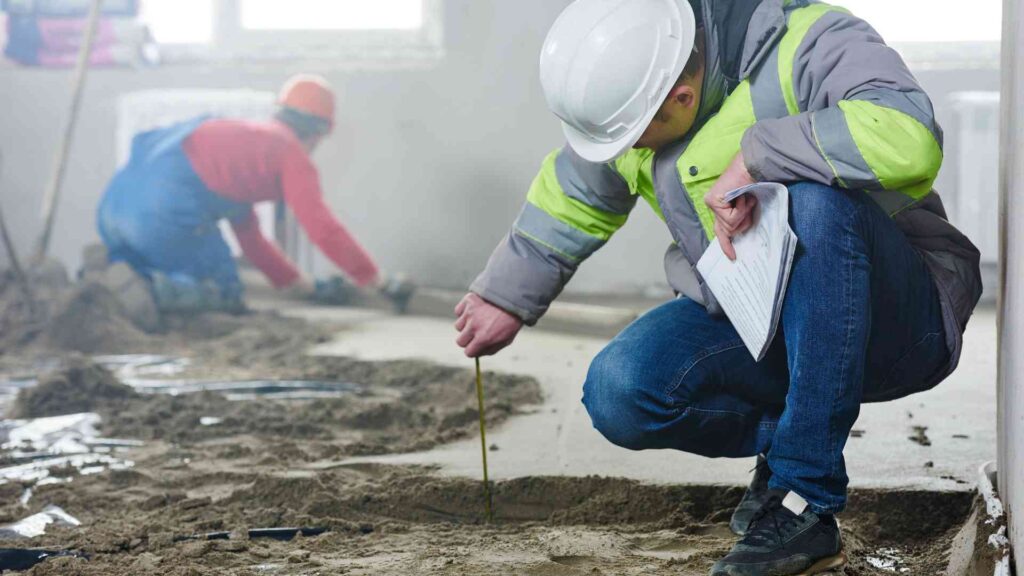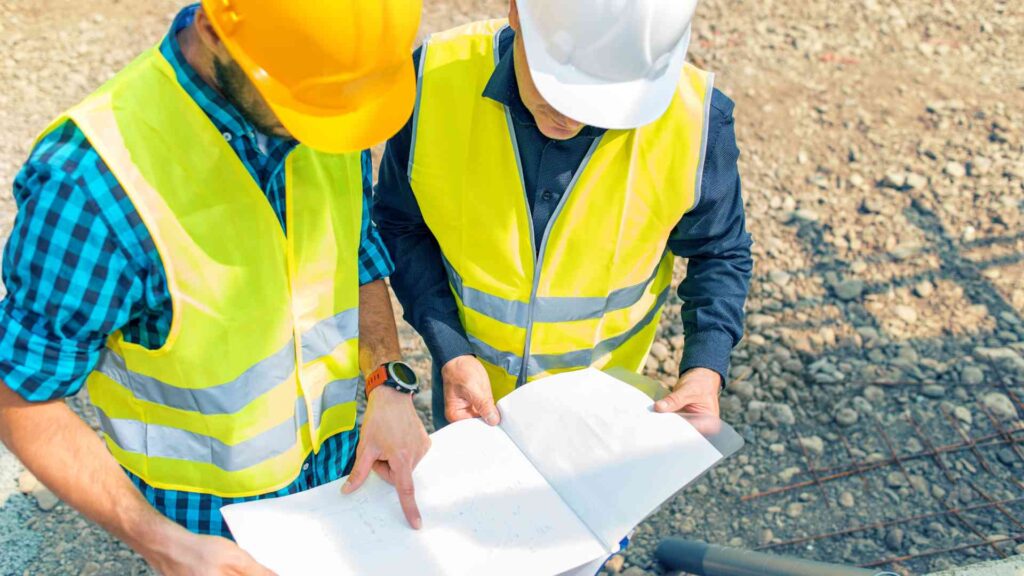Concrete has long been a staple in the construction industry, providing stability, durability, and strength to structures worldwide. However, as our society continues to evolve, so does our need for innovative technologies and trends in concrete production. In this article, we will explore the current state of concrete, the evolution of concrete technology, and the exciting new possibilities on the horizon. We will also delve into the environmental impact and sustainability trends of concrete production, as well as the economic implications of these cutting-edge technologies.
Understanding the Current State of Concrete
Concrete plays a crucial role in modern construction, serving as the foundation for countless structures. Its versatility allows builders to create structures of various shapes and sizes, from towering skyscrapers to intricate infrastructure. Concrete’s unique properties, such as fire resistance and thermal mass, have made it the material of choice for both residential and commercial projects.
However, traditional concrete does have its limitations and challenges. One major concern is its susceptibility to cracking, which can compromise the structural integrity of a building. Cracks can occur due to factors such as shrinkage, thermal expansion, and external loads. These cracks not only affect the appearance of the concrete but also reduce its durability and lifespan.
To address this issue, researchers and engineers have been exploring innovative solutions. One such solution is the use of fiber-reinforced concrete (FRC). By adding fibers, such as steel or synthetic materials, to the concrete mix, the resulting material becomes more resistant to cracking. These fibers act as reinforcements, distributing the stress throughout the concrete and preventing the formation of large cracks.
Another area of focus is the development of self-healing concrete. This type of concrete contains capsules filled with healing agents, such as bacteria or polymers. When cracks form, these capsules rupture, releasing the healing agents into the cracks. The agents then react with the surrounding environment, filling the cracks and restoring the concrete’s integrity. This innovative technology has the potential to significantly extend the lifespan of concrete structures and reduce maintenance costs.
In addition to addressing the issue of cracking, researchers are also working on reducing the environmental impact of concrete production. The production of traditional concrete releases a significant amount of carbon dioxide into the atmosphere, contributing to global climate change. To mitigate this, alternative cementitious materials, such as fly ash or slag, are being used as partial replacements for cement. These materials not only reduce carbon dioxide emissions but also enhance the durability and strength of the concrete.
Furthermore, efforts are being made to incorporate sustainable practices into the concrete industry. This includes using recycled aggregates, such as crushed concrete or demolished buildings, as a substitute for natural aggregates. By reusing these materials, the demand for virgin resources is reduced, leading to a more sustainable and environmentally friendly construction industry.
In conclusion, while traditional concrete has been the go-to material for construction for many years, ongoing research and innovation are revolutionizing the industry. Fiber-reinforced concrete and self-healing concrete are addressing the issue of cracking, while the use of alternative cementitious materials and sustainable practices are reducing the environmental impact of concrete production. These advancements are not only improving the performance and durability of concrete but also paving the way for a more sustainable and resilient future in construction.
The Evolution of Concrete Technology
Concrete has come a long way since its inception during the Roman era. The Romans used a combination of lime, volcanic ash, and rubble to create durable structures that still stand today. Their innovative use of concrete allowed them to construct magnificent buildings, aqueducts, and roads that showcased their engineering prowess.
In recent decades, technological advancements in concrete production have revolutionized the industry, paving the way for extraordinary possibilities. The development of new admixtures and additives has significantly improved the strength, durability, and workability of concrete. These additives, such as plasticizers, superplasticizers, and air-entraining agents, have made it easier to produce high-performance concrete that can withstand extreme conditions.
Nowadays, concrete technology has reached unprecedented heights. Researchers and engineers are constantly experimenting with new materials and production methods to enhance its qualities. These advancements include the utilization of supplementary cementitious materials, such as fly ash and slag, to reduce the carbon footprint of concrete production. By replacing a portion of the cement with these materials, the environmental impact of concrete production can be significantly reduced without compromising its structural integrity.
Furthermore, the development of self-healing concrete has been a game-changer in the construction industry. Microorganisms embedded in the concrete can repair cracks and damage by producing limestone, effectively extending the lifespan of structures and reducing maintenance costs. This innovative technology has the potential to revolutionize the way we build and maintain infrastructure.
Another area of advancement in concrete technology is the incorporation of nanomaterials. By adding nanoparticles to the concrete mix, engineers can enhance its mechanical properties, increase its resistance to chemical attack, and improve its durability. Nanotechnology has opened up a world of possibilities for creating self-cleaning concrete, which can repel dirt and pollutants, reducing the need for frequent cleaning and maintenance.
Moreover, the use of fiber-reinforced concrete has gained popularity in recent years. Fibers, such as steel, glass, or synthetic fibers, are added to the concrete mix to enhance its tensile strength and control cracking. This technology has been particularly beneficial in the construction of high-rise buildings and infrastructure projects where durability and structural integrity are of utmost importance.
As we look to the future, the evolution of concrete technology shows no signs of slowing down. Researchers are exploring innovative approaches such as 3D printing of concrete structures, which has the potential to revolutionize the construction industry by enabling the rapid and cost-effective production of complex architectural designs.
In conclusion, the evolution of concrete technology has been a remarkable journey. From the ancient Roman structures to the cutting-edge advancements of today, concrete continues to be a vital building material that shapes our modern world. With ongoing research and development, we can expect even more exciting breakthroughs that will further enhance the strength, durability, and sustainability of concrete.
Innovative Concrete Technologies on the Horizon
The future of concrete holds incredible promise with the emergence of groundbreaking technologies. Self-healing concrete, for example, has the ability to repair cracks autonomously, increasing the lifespan and durability of structures. This innovative material contains capsules of healing agents that are activated when cracks appear, effectively sealing them and preventing further damage.
But the advancements in concrete technology do not stop there. Scientists and engineers are continuously pushing the boundaries of what concrete can do, exploring new possibilities and revolutionizing the construction industry.
One such technology that is on the horizon is transparent concrete. By incorporating a matrix of optical fibers into the concrete mixture, designers can create see-through panels that allow natural light to permeate buildings. Imagine a world where entire facades are made of transparent concrete, transforming the way we experience architecture. This opens up a world of possibilities for architects, enabling the creation of visually striking and sustainable structures.
But what about the construction process itself? Enter 3D printed concrete, a technology that has been gaining momentum in recent years. This process involves using computer-controlled robots to deposit layers of concrete, enabling the construction of intricate and complex designs that were once thought impossible. With 3D printing, architects and engineers can push the boundaries of design, creating structures that are not only visually stunning but also highly efficient.
Imagine a world where buildings are not limited by traditional construction methods, where the only limit is the imagination. 3D printed concrete not only reduces waste and labor costs but also allows for greater design flexibility. The possibilities are endless, from creating customized architectural elements to constructing entire buildings in a fraction of the time it would take with traditional methods.
As we look to the future, it is clear that concrete is no longer just a basic building material. It is a canvas for innovation and creativity, a material that can adapt and evolve to meet the needs of a rapidly changing world. The technologies on the horizon, such as self-healing concrete, transparent concrete, and 3D printed concrete, are just the beginning. Who knows what other groundbreaking technologies await us in the world of concrete?
Environmental Impact and Sustainability Trends in Concrete Production
With sustainability becoming an increasingly important concern, the carbon footprint of concrete production has come under scrutiny. The traditional production process releases a significant amount of carbon dioxide due to the cement’s calcination process. However, innovative solutions, such as the use of recycled materials and alternative cementitious materials, have emerged to combat this issue.
Green concrete, for instance, utilizes recycled aggregates, such as crushed concrete, in the production process. By diverting waste from landfills and reducing the need for raw materials, green concrete significantly reduces both energy consumption and carbon emissions. Moreover, the incorporation of industrial byproducts, like blast furnace slag and fly ash, further enhances its environmental profile.
The Economic Implications of New Concrete Technologies
While the adoption of innovative concrete technologies may seem expensive at first glance, a comprehensive cost-benefit analysis reveals their substantial long-term advantages. The increased durability and lifespan of structures built using self-healing or 3D printed concrete reduce the need for frequent repairs and maintenance, ultimately saving costs for both owners and contractors.
In addition, the construction industry may experience a paradigm shift due to these emerging technologies. The ability to create complex designs and structures with greater efficiency and fewer resources opens up new avenues for architects and engineers. As a result, the demand for skilled professionals in concrete technology may increase, leading to job creation and economic growth.
In conclusion,
As our society strives for continued progress, the future of concrete lies in innovative technologies and trends. Understanding the current state of concrete and its limitations is vital to drive positive change. The evolution of concrete technology has already shown remarkable advancements, and the possibilities are endless. By prioritizing sustainability, we can minimize the environmental impact of concrete production. Lastly, embracing these cutting-edge technologies may yield significant economic benefits, revolutionizing the construction industry as we know it. The future of concrete is undoubtedly bright, and we are poised to witness its transformative journey firsthand.


